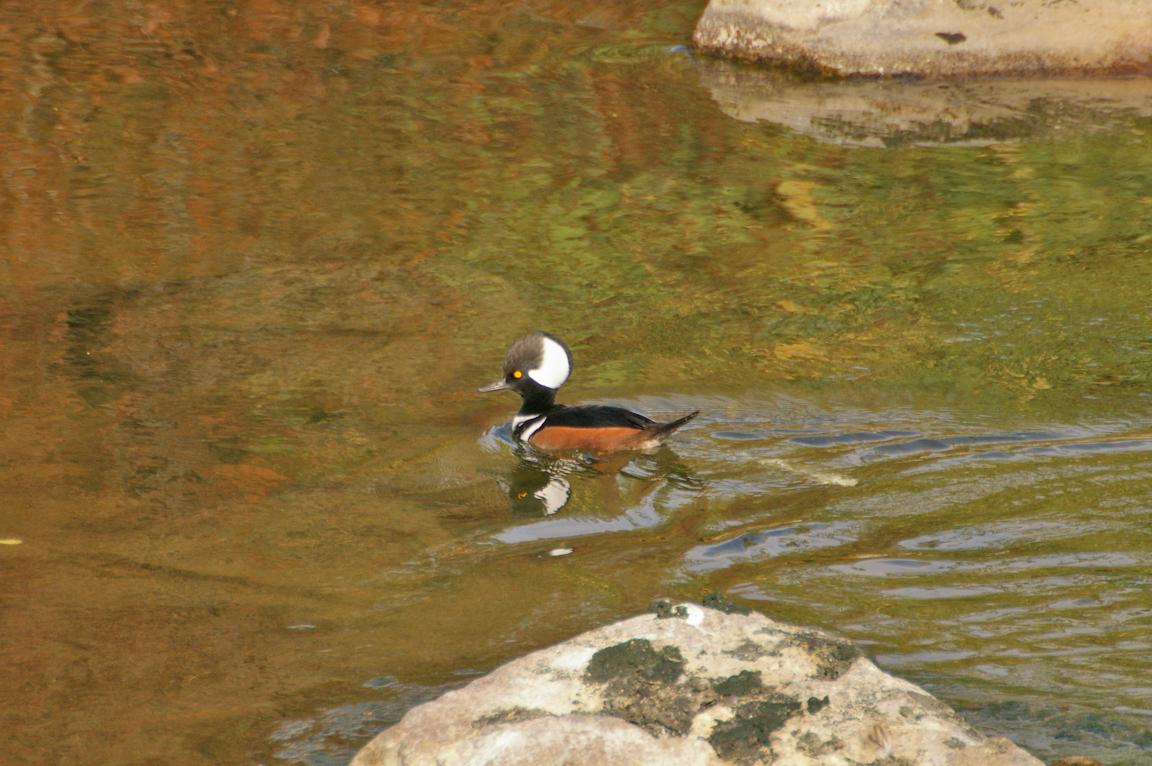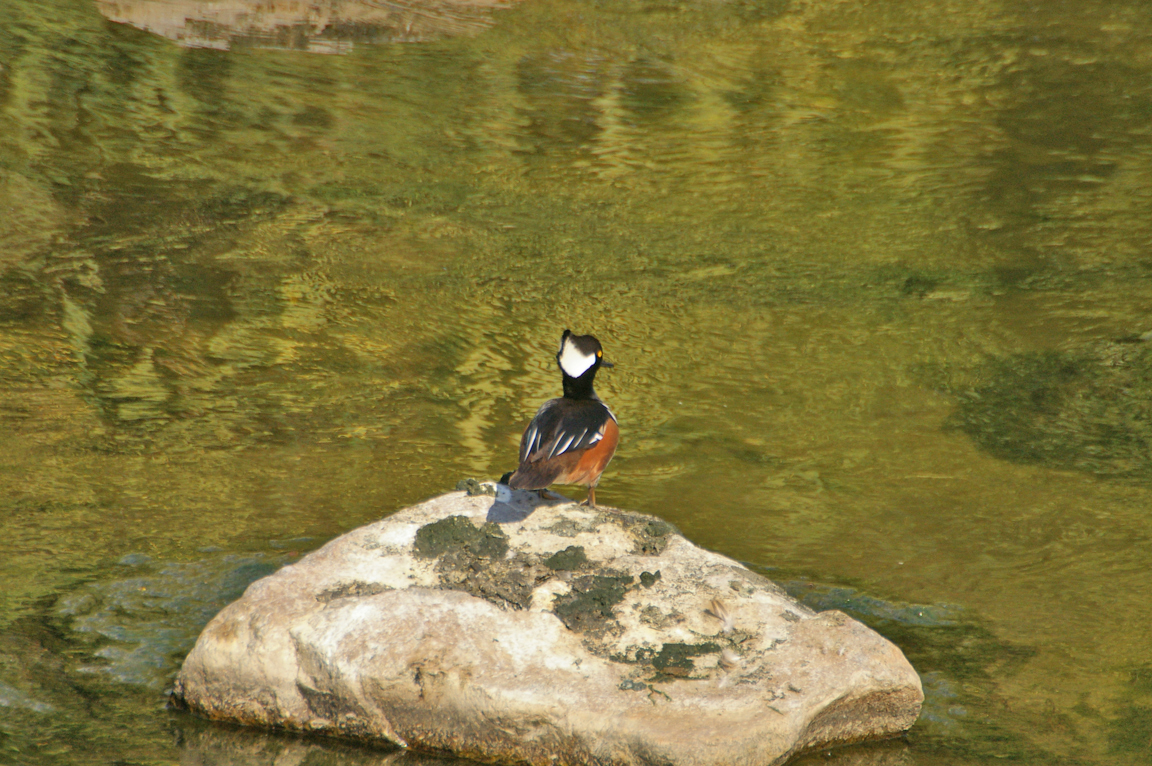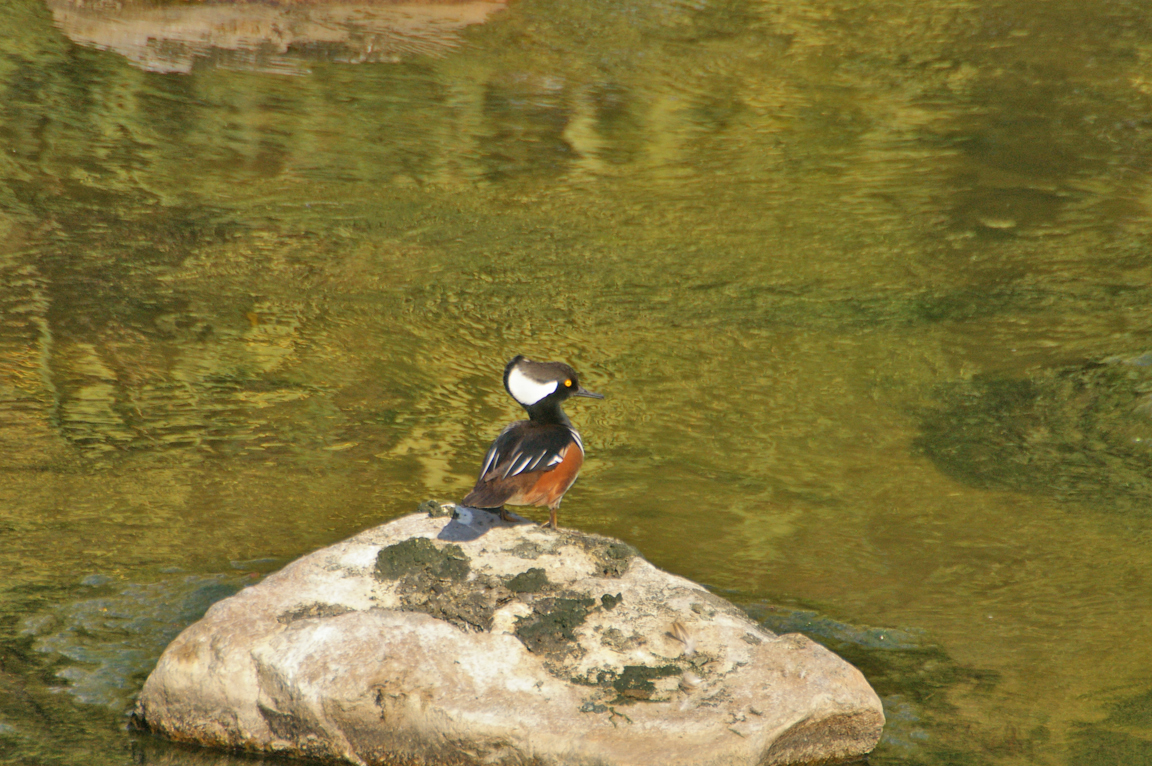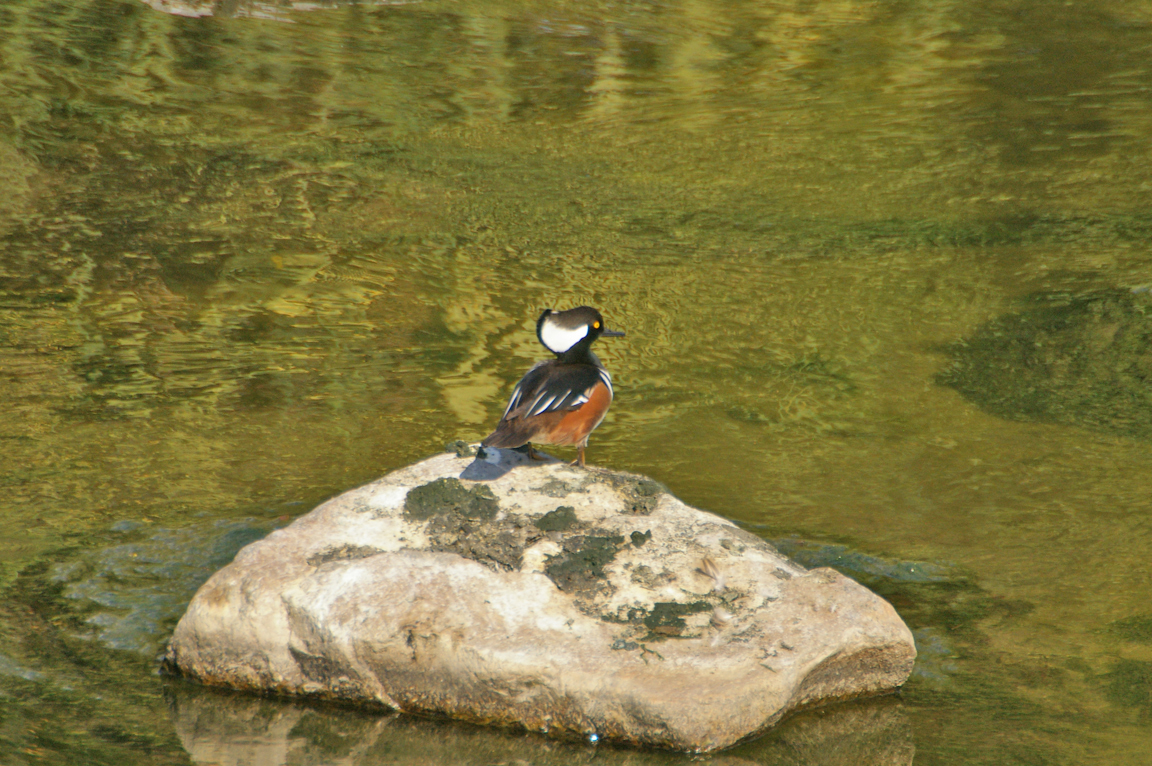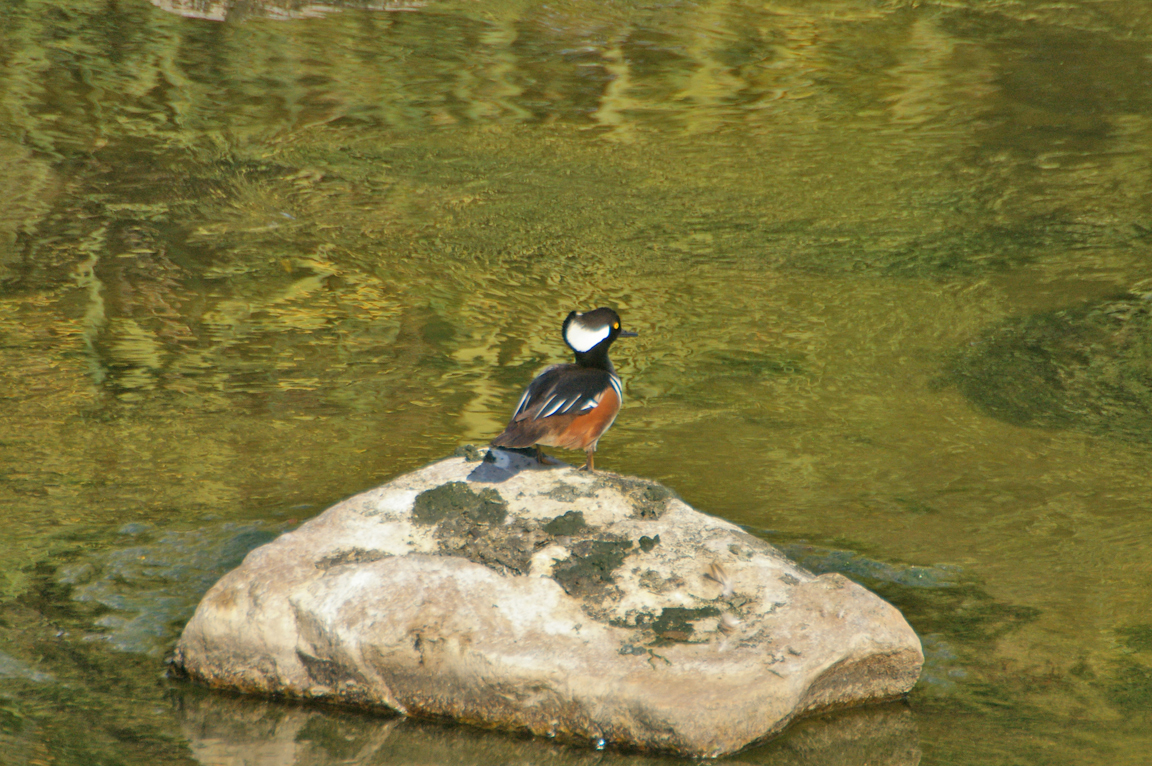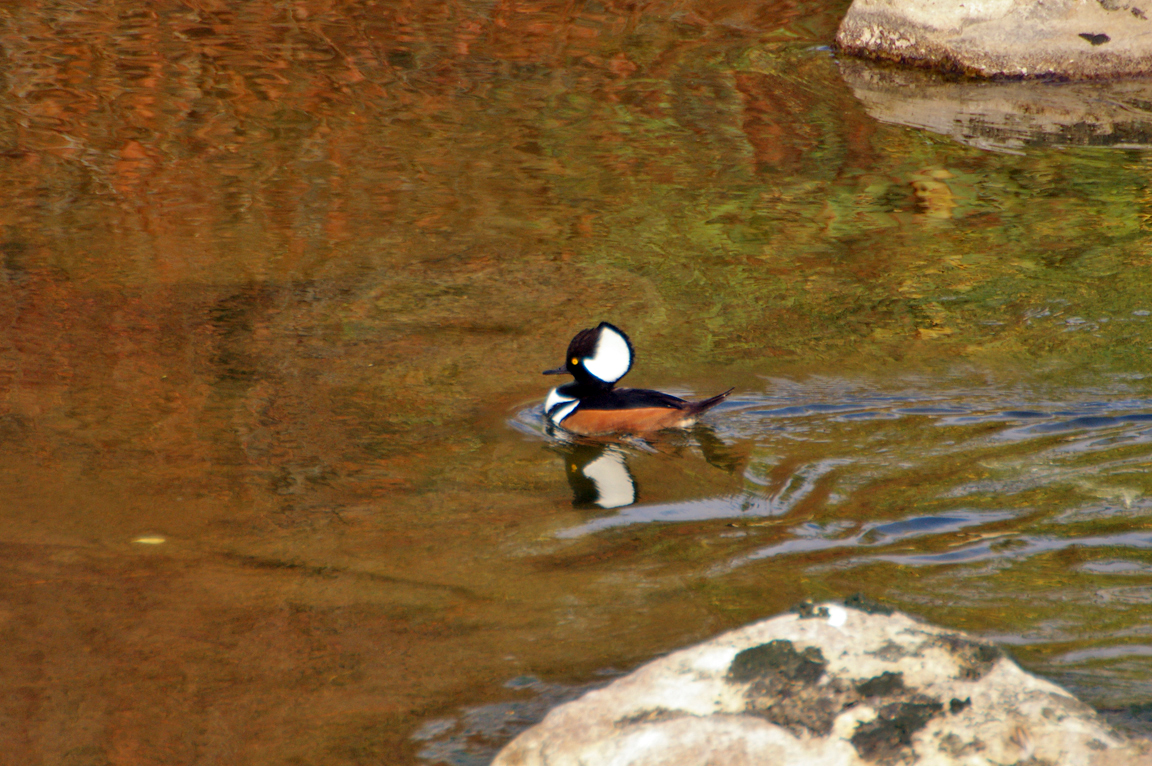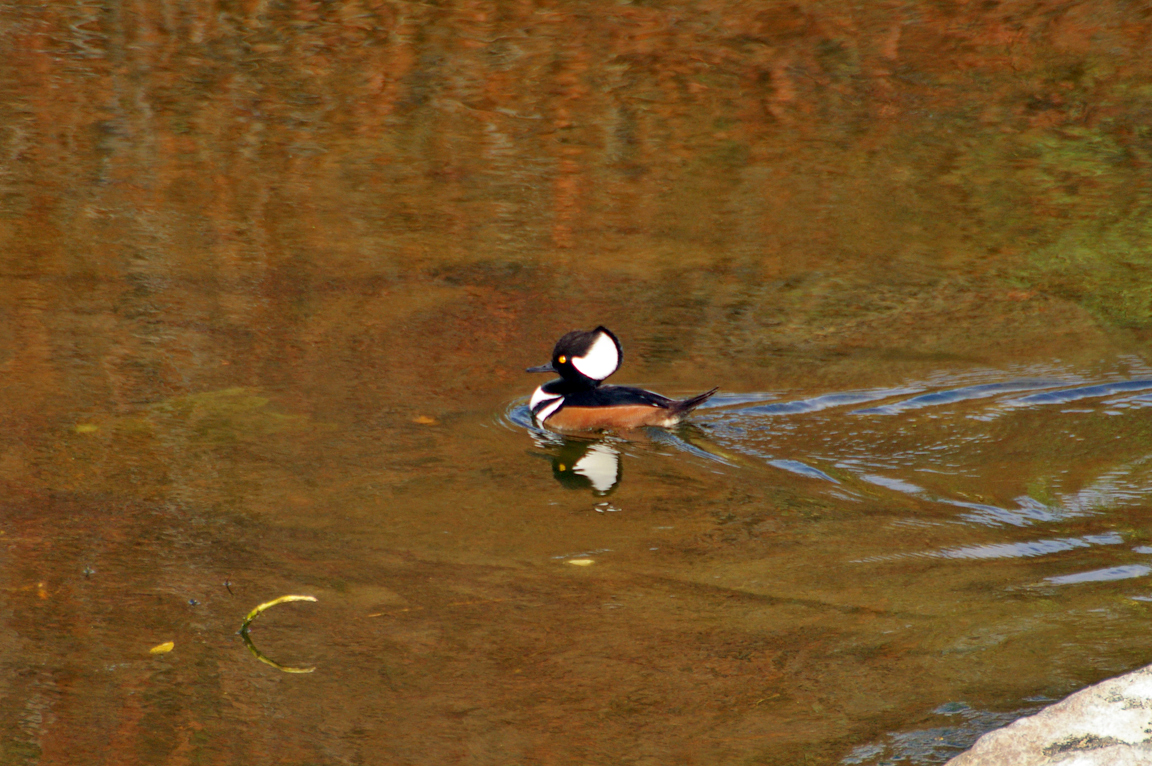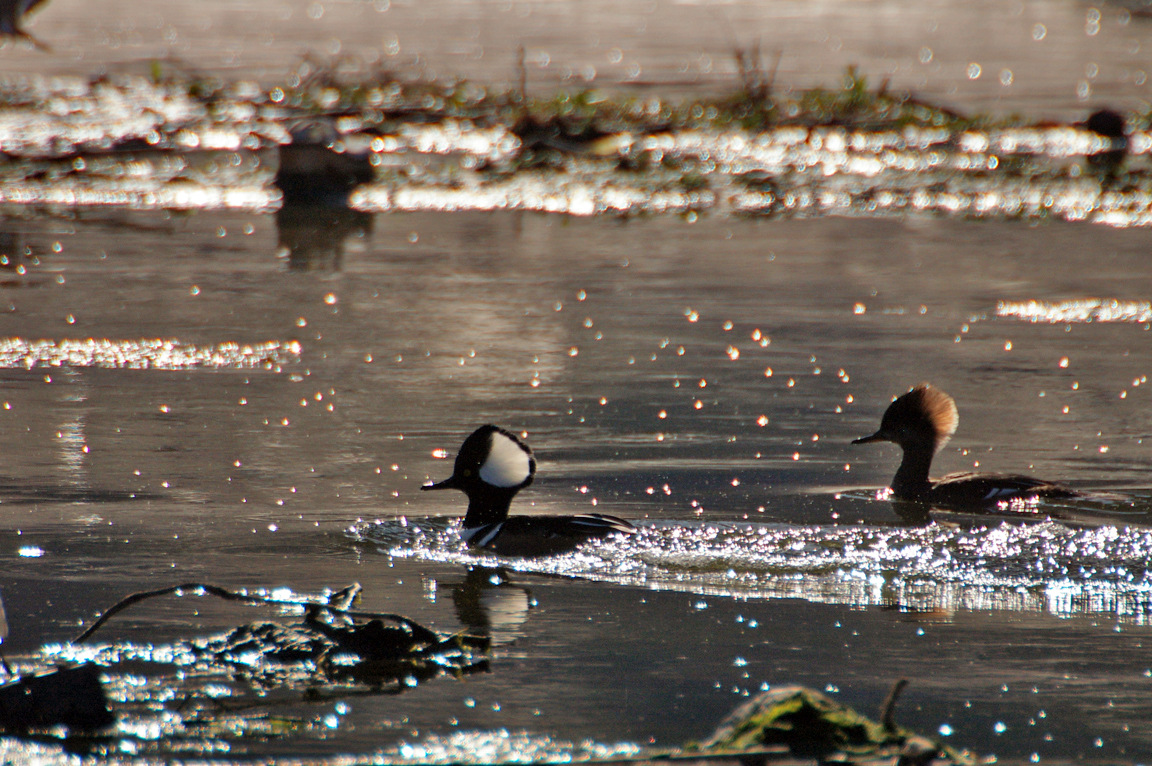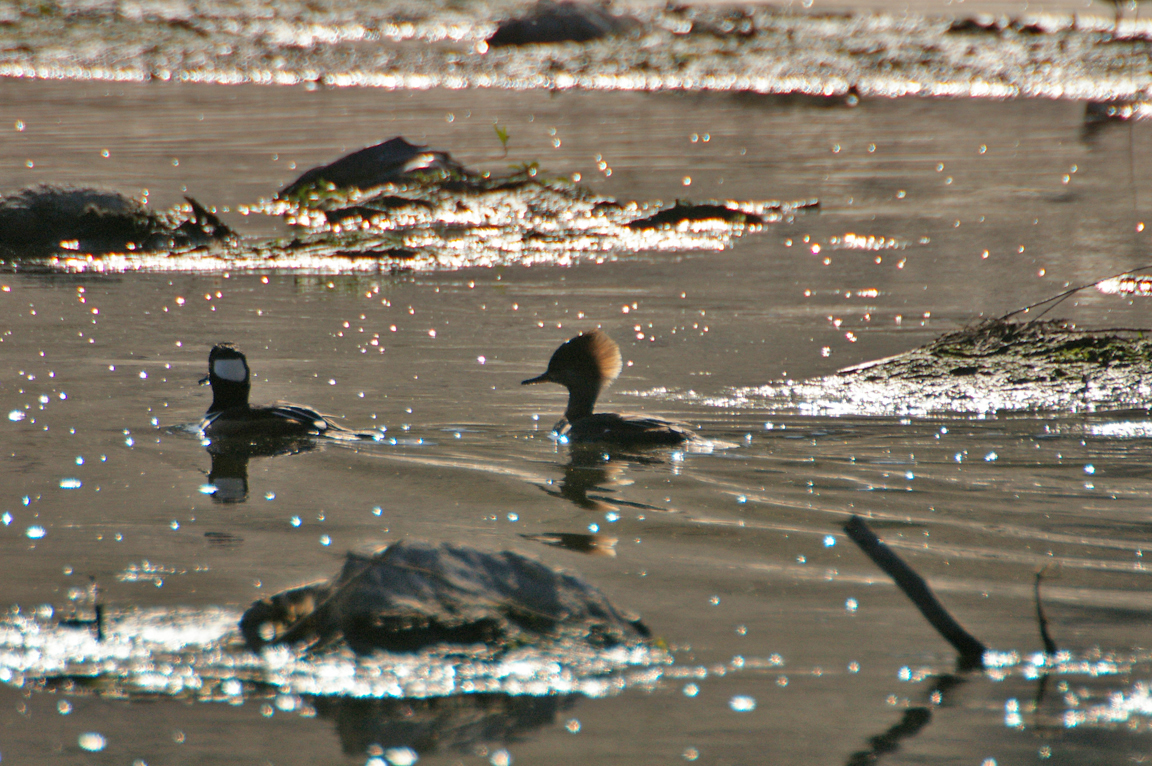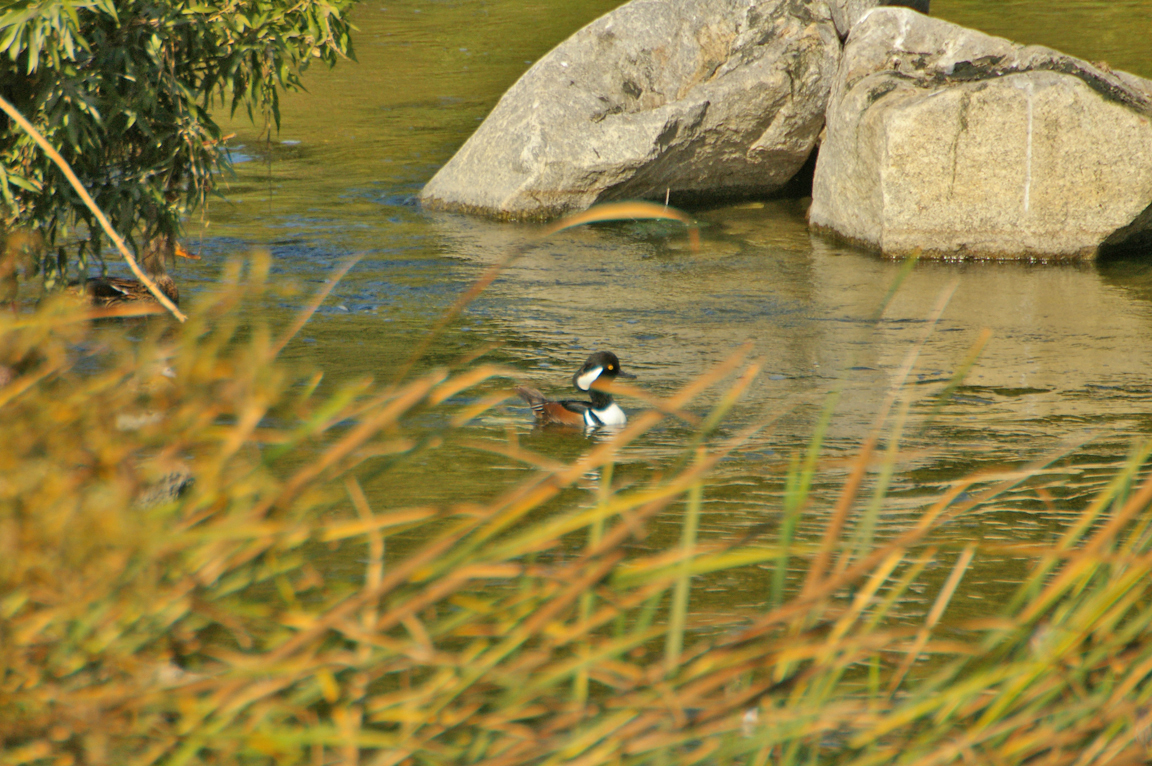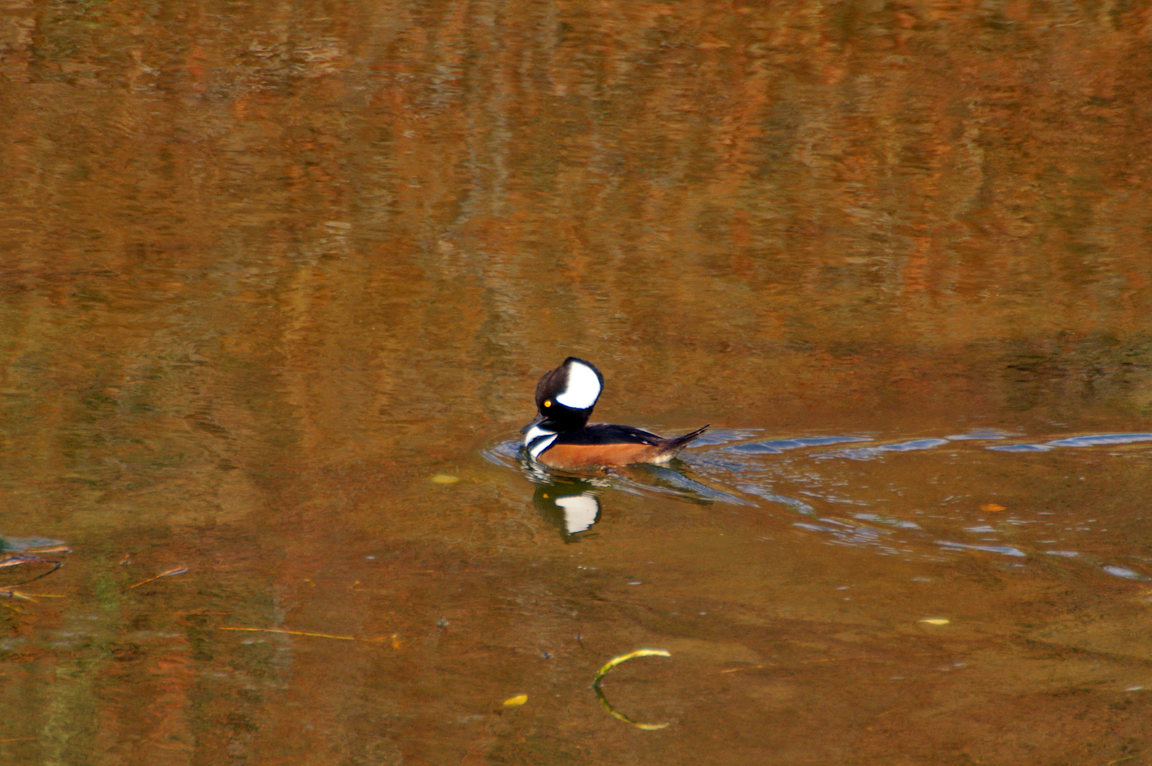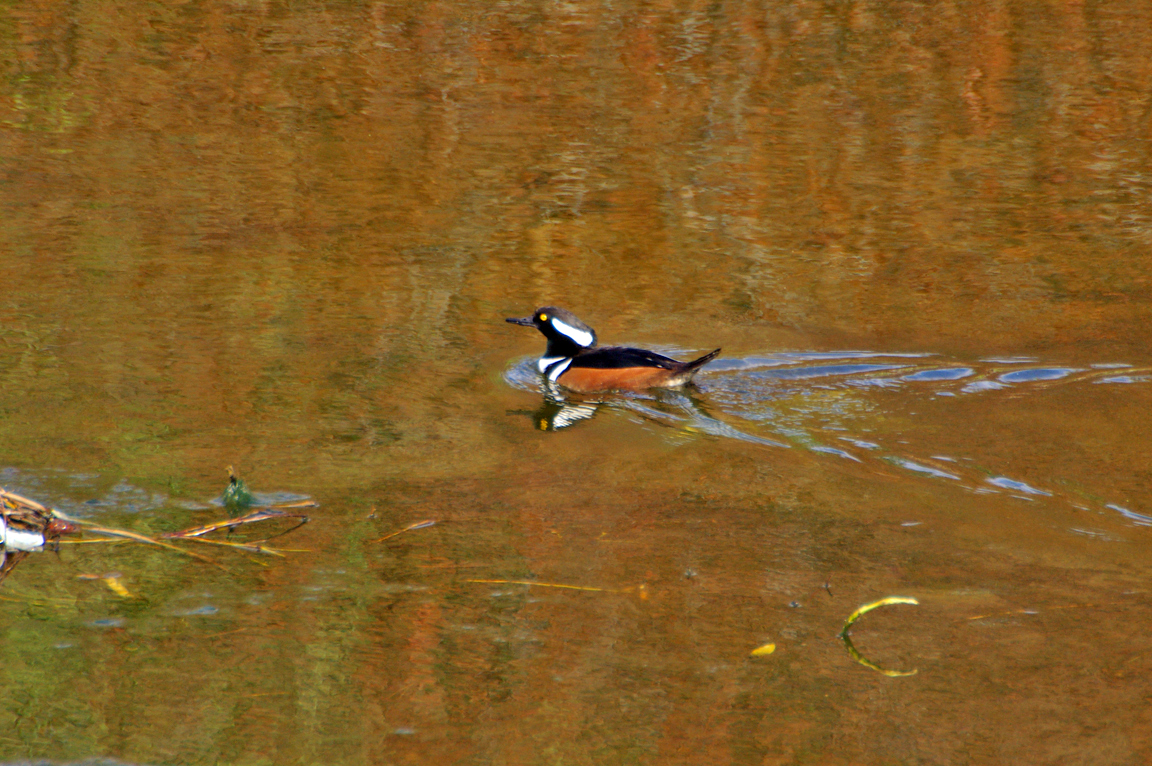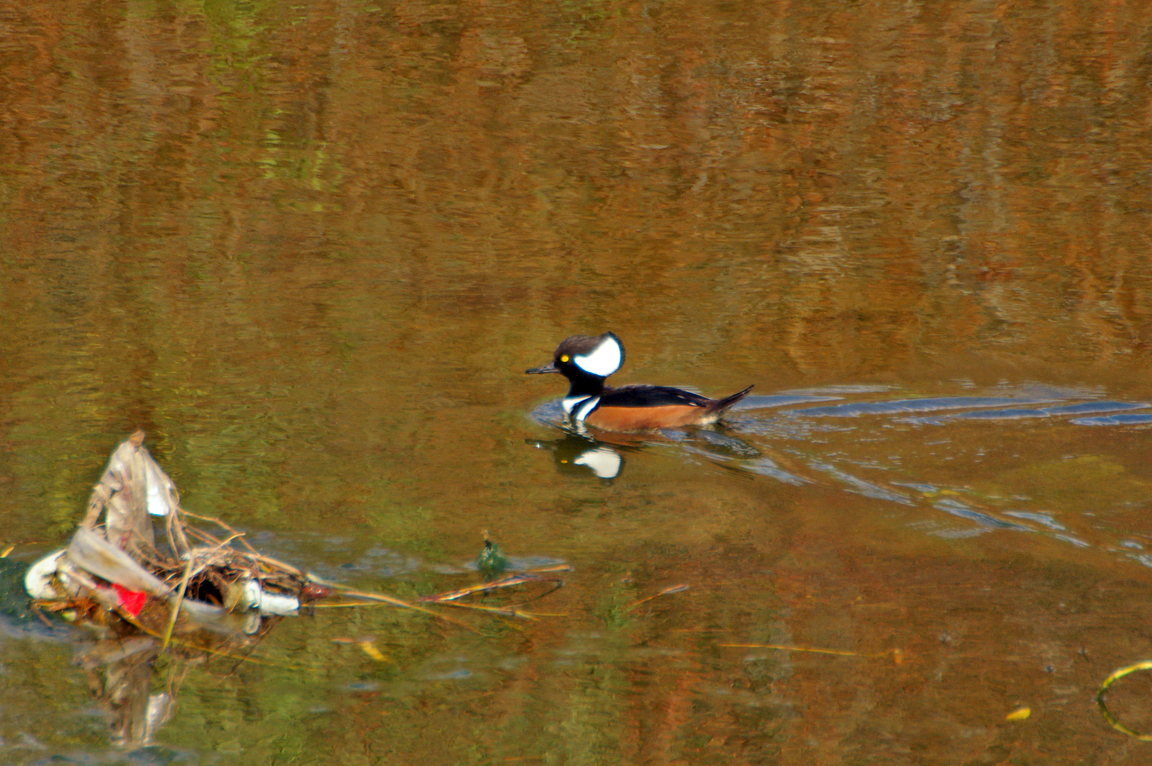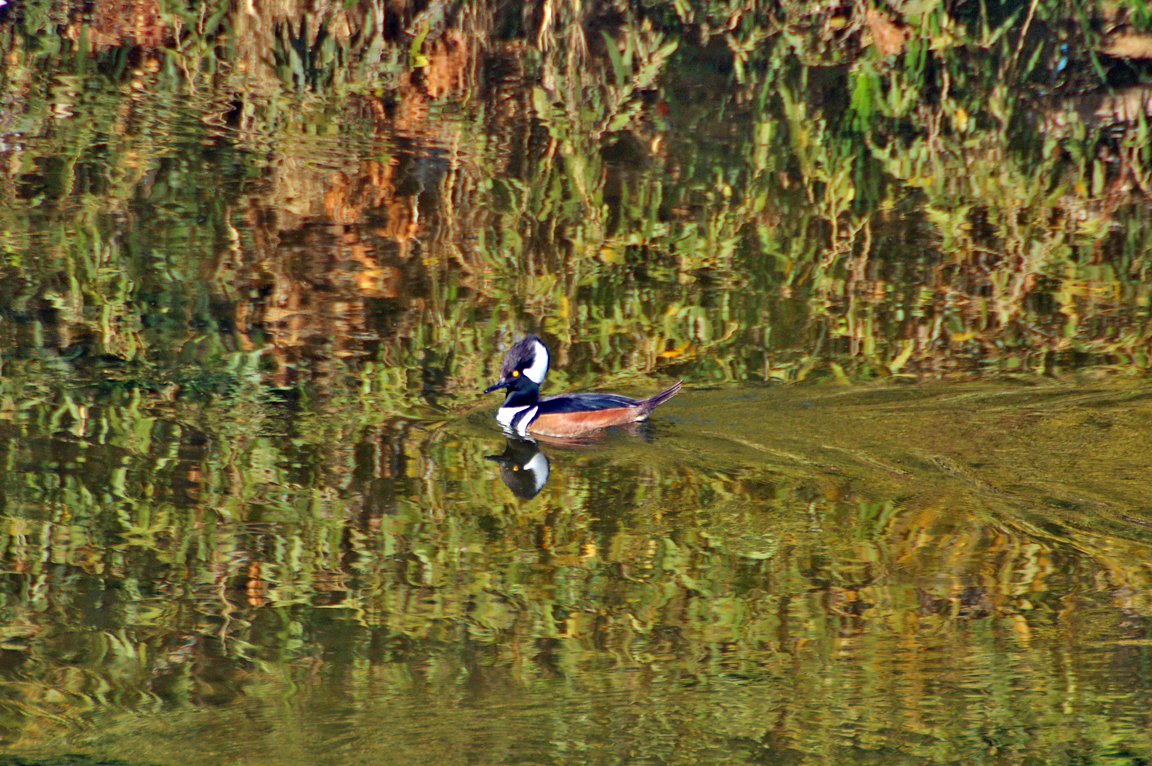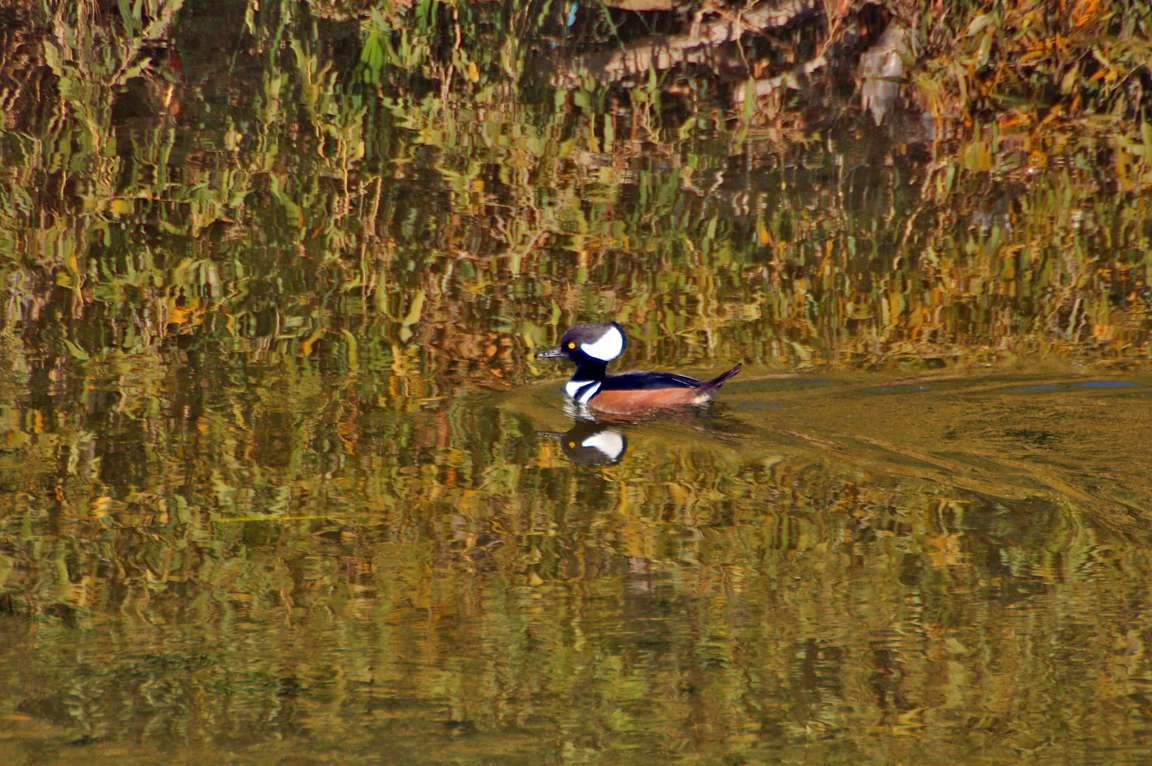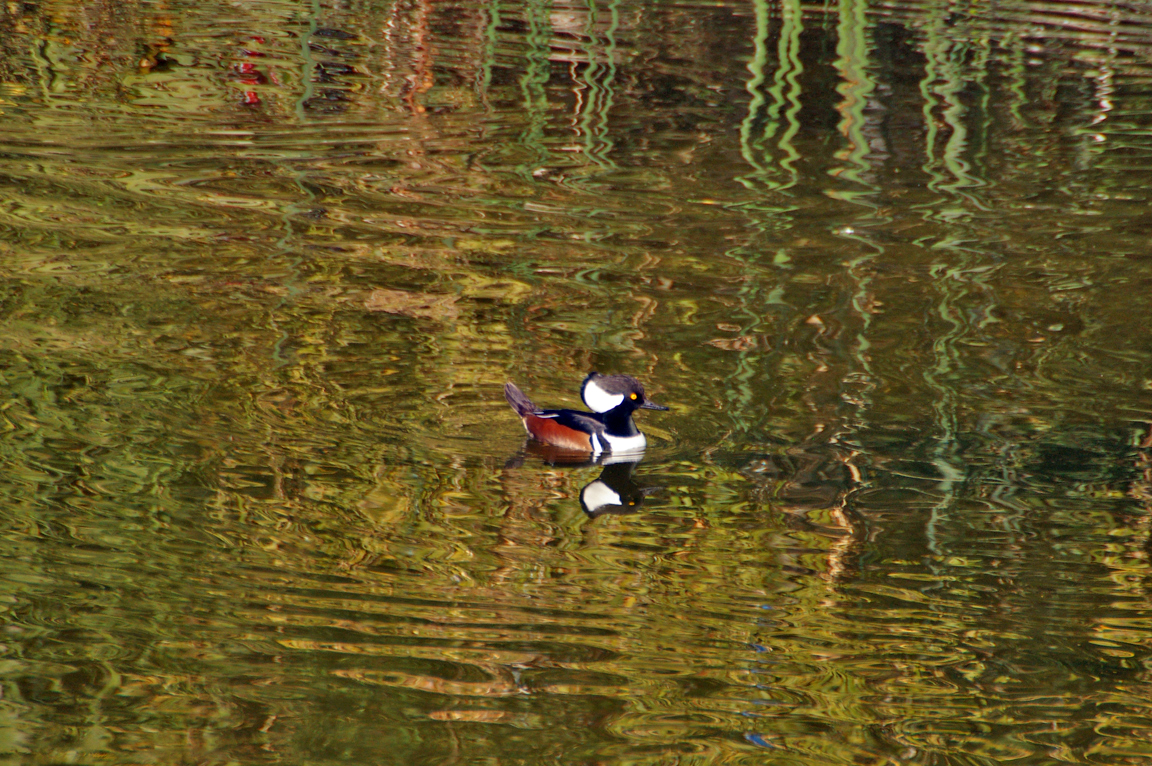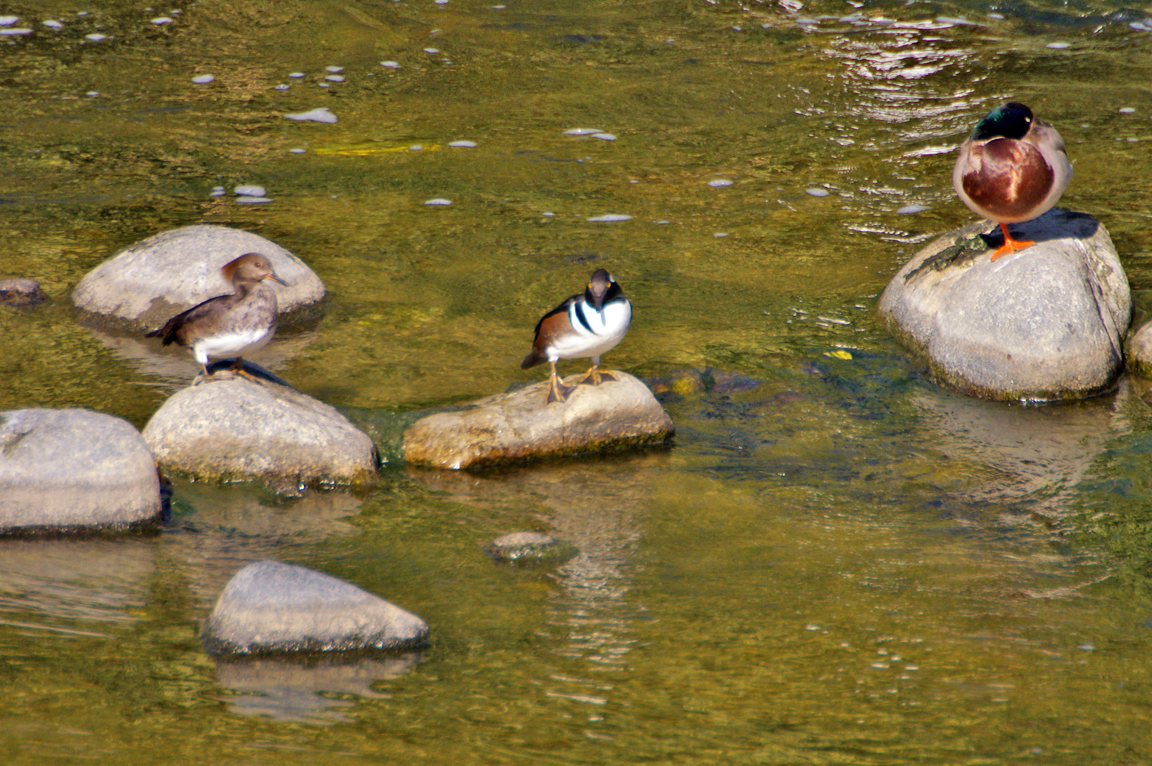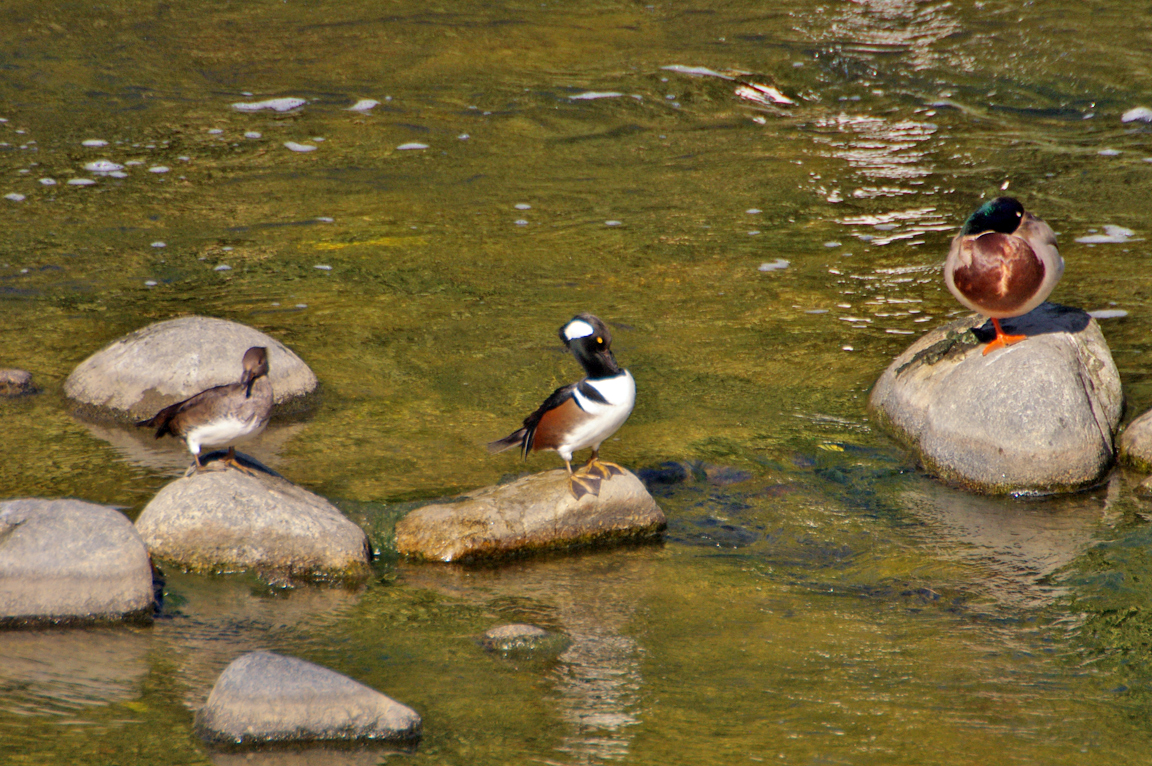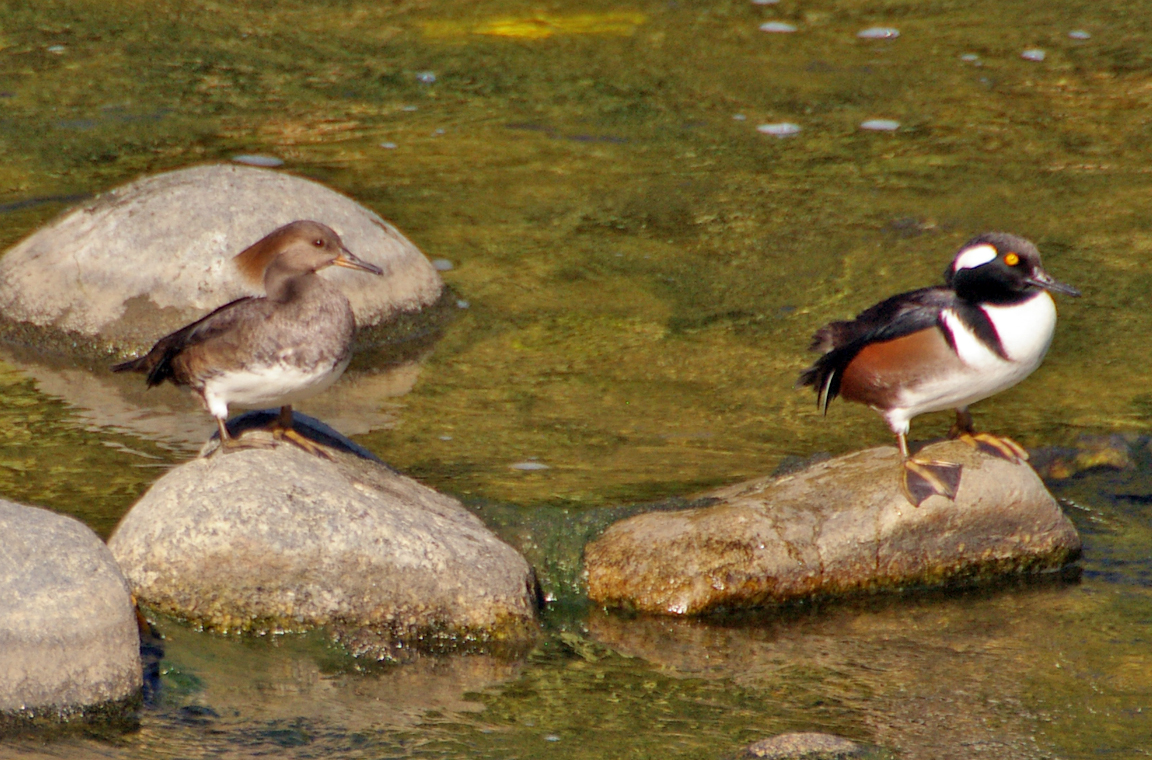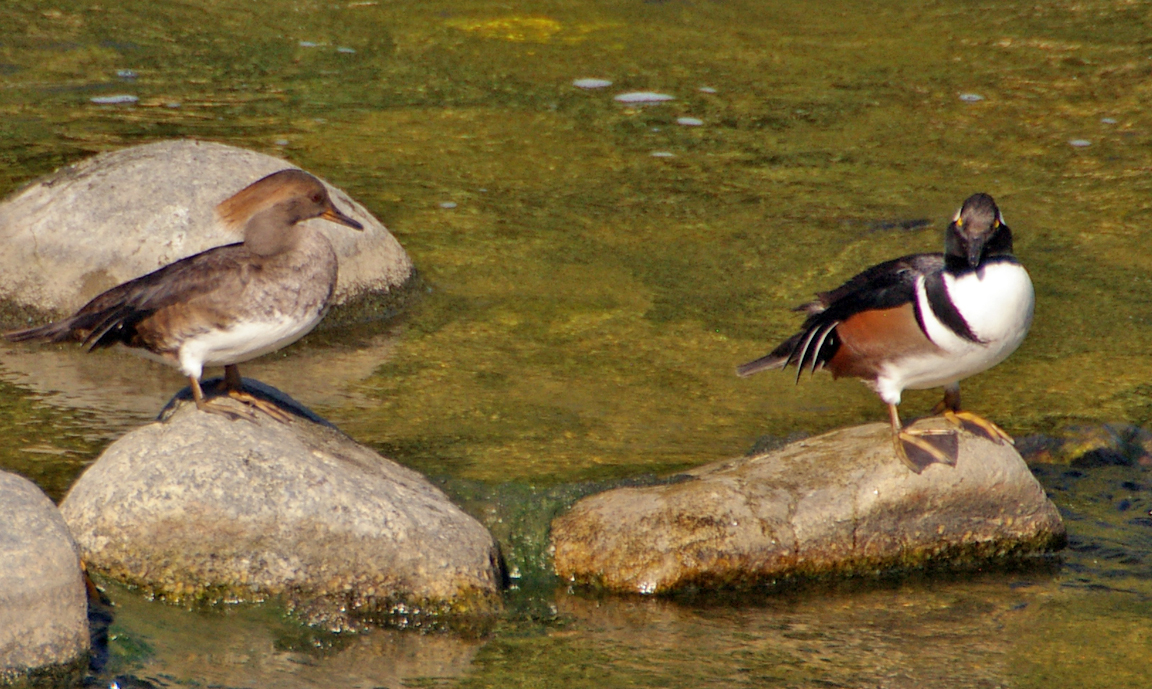|
|
|
 |
Hooded Merganser
|
| Lophodytes cucullatus | |
A small fish-eating duck of wooded ponds, the Hooded Merganser nests in holes in trees. It is frequently seen on shallow waters where its only waterfowl companion is the Wood Duck.
Interesting Information
-
The Hooded Merganser is the second-smallest of the six living species of mergansers (only the Smew of Eurasia is smaller) and is the only one restricted to North America.
-
Although up to 44 Hooded Merganser eggs have been found in one nest, one female probably does not lay more than about 13. Larger clutches result when more than one female lays eggs in a nest.
-
The Hooded Merganser finds its prey underwater by sight. The merganser can actually change the refractive properties of its eyes to enhance its underwater vision. In addition, the nictitating membrane (third eyelid) is very transparent and probably acts to protect the eye during swimming, just like a pair of goggles.
Description
Adult Description
-
Small to medium-sized duck.
-
Long, narrow bill.
-
Fluffy, fan-shaped crest.
-
Male with large white patch in crest.
-
Length Range: 41-48 cm (16-19 in)
-
Weight: 680 g (24 oz)
-
Size: Medium (9 - 16 in)
-
Color Primary: White, Brown, Black, Sheen or Iridescence
-
Underparts: White
-
Upperparts: Black and white.
-
Back Pattern: Solid
-
Belly Pattern: Solid
-
Breast Pattern: Solid
Sex Differences
Male Description
Breeding (Alternate) Plumage
Circular crest with large white patch, outlined in black. Face black. Eyes gold. Back black. Sides rusty. Chest white, bordered by black and white stripes. Bill dark with yellow base.
Nonbreeding (Basic) Plumage
Back, sides, and breast grayish brown. Belly white. Crest dusky, not brown like female's. Eyes yellow. Bill black.
Female Description
Body brownish. Head brownish with bushy rufous crest. Small white patch on chin. Breast and neck slaty. Tail brownish. Wings blackish brown. Small white patch at base of wings. Eyes brownish buff. Upper mandible blackish green with orange edge, lower mandible orange or yellowish.
Immature
Immature resembles adult female. First-year male similar to female, but crest dull brown with a white patch, some black feathers on head and sides, bill dark, and eyes yellow.
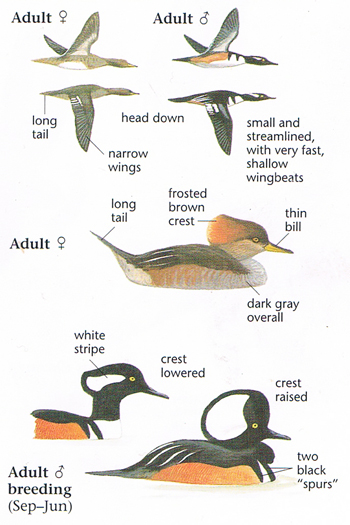
Photo taken from: The Sibley Field Guide by David Allen Sibley
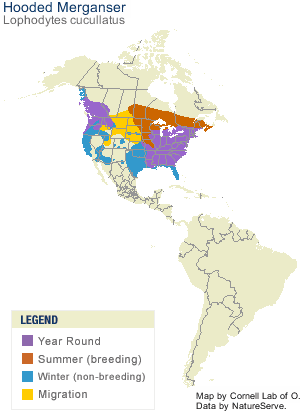
© 2003 Cornell Lab of Ornithology
|
Habitat |
|
|
Behavior |
|
Dives underwater to catch prey. |
|
Food |
|
Fish, aquatic insects, and crustaceans (especially crayfish). |
Taxonomy
| Kingdom: | Animalia |
| Phylum: | Chordata |
| Subphylum: | Vertebrata |
| Class: | Aves |
| Order: | Anseriformes |
| Family: | Anatidae |
| Subfamily: | Anatinae |
| Genus: | Lophodytes |
| Species: | Lophodytes cucullatus |
Similar Species |
|
|
Bird Sound |
|
Silent except in courtship when male gives a deep rolling frog-like sound. Wings produce a loud whistling in flight. |
|
Eggs look like this |
|
Photo taken from: ARCTOS Collaborative Collection Management Solution |
Videos
Hooded Merganser
Hooded Merganser Female
